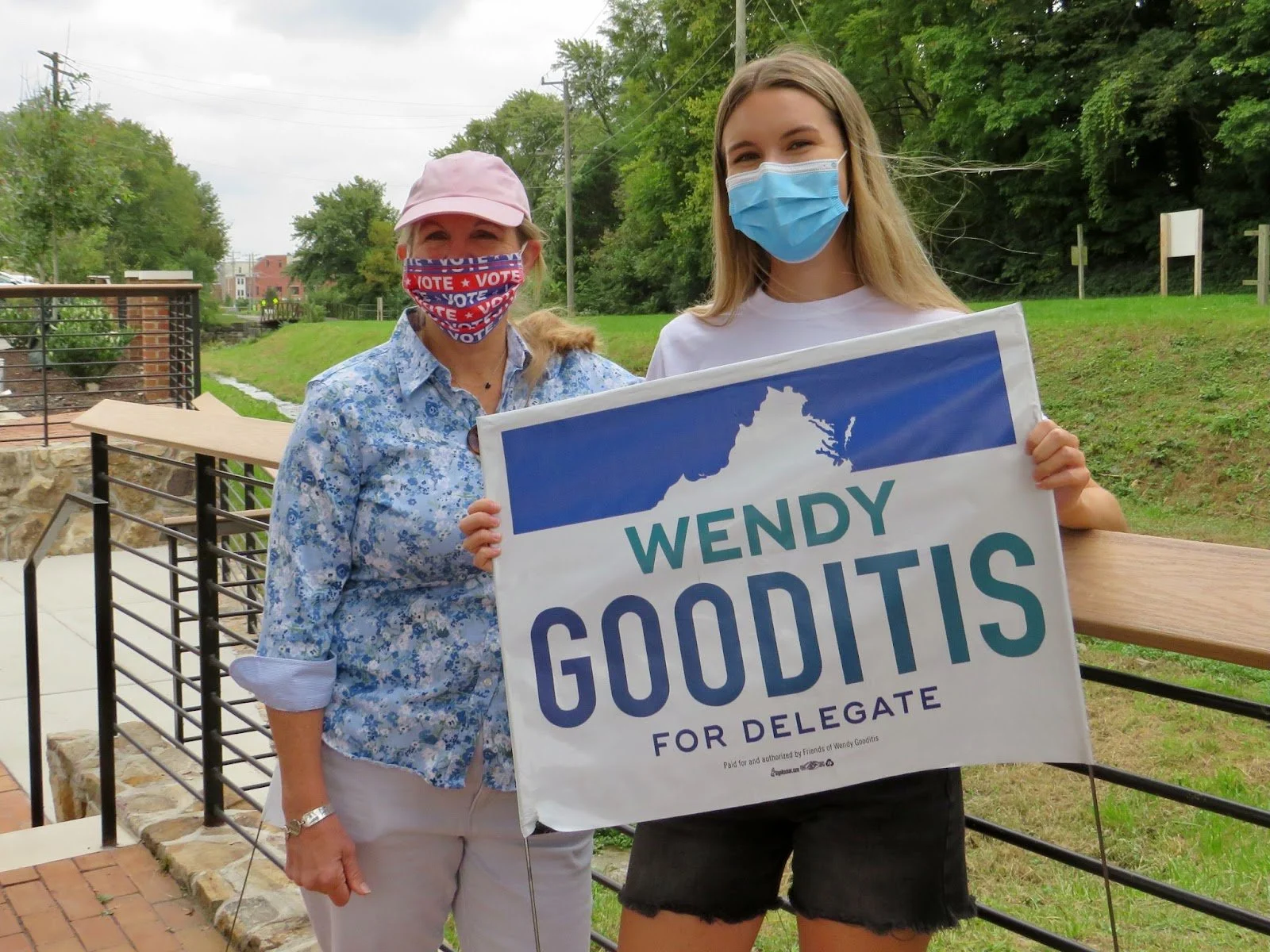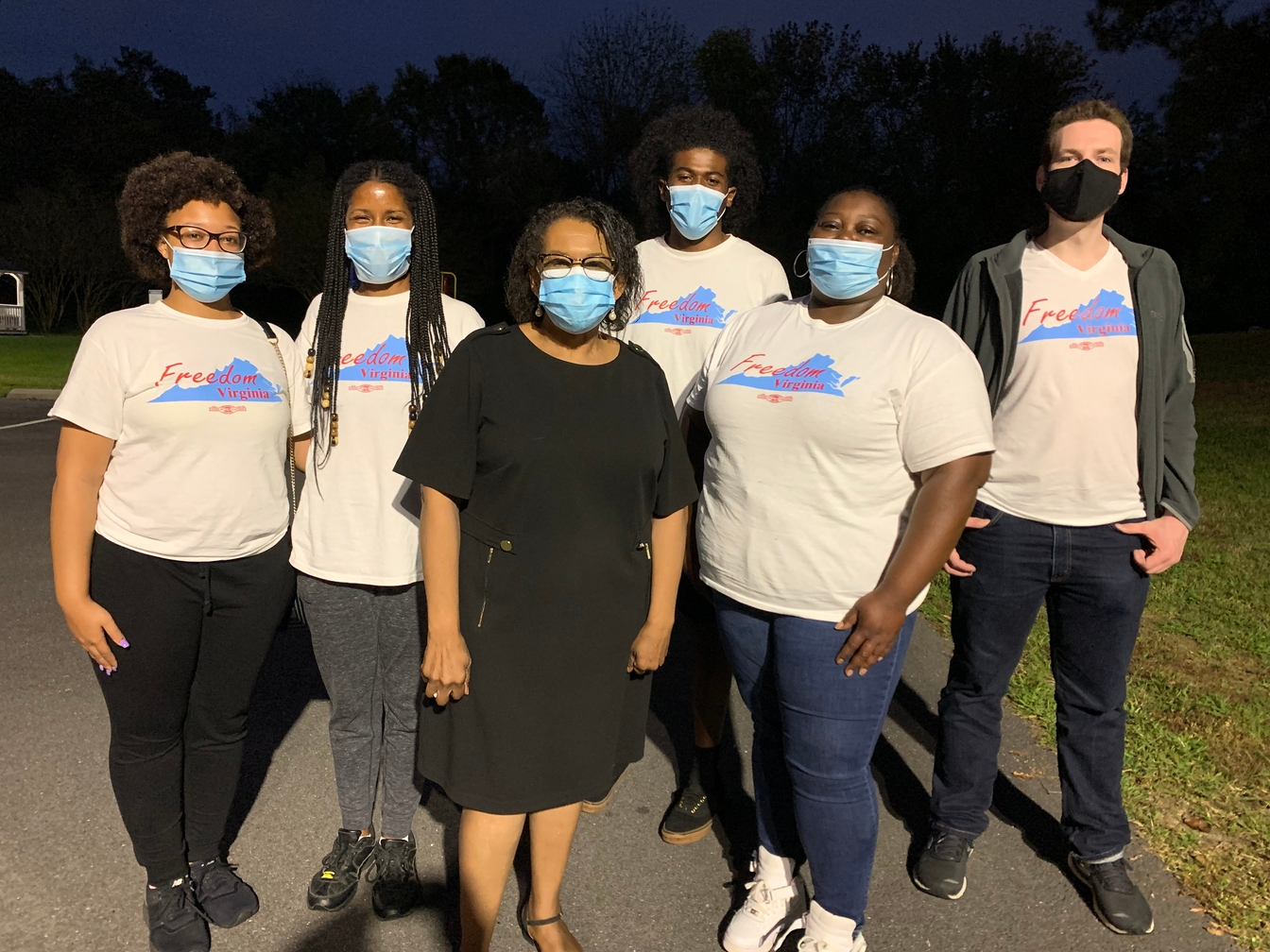VIRGINIA 2021: THE VICTORIES
We ran an extremely successful program in Virginia last year in spite of electoral losses around the Commonwealth, with turnout rates jumping 10-12 percentage points among voters we spoke with, and even higher rates - including an overall turnout rate north of 80 percent - among the voters we spoke with during an earlier-summer canvass. The takeaway, as always: canvassing works, especially when you do it early, and then continue doing it often. And it’s how you turn short-term losses into long-term victories.
Losing an election stinks. No two ways about it. You pour your soul into building a staff and teaching people how to do this critical work. You have countless conversations with voters at their doors, hear their stories, feel their passion for the issues that affect their lives. And you take on the hopes and fears of the entire community about the consequences if the election breaks one way or the other. And when it breaks against you, it hurts.
It’s important to feel that hurt, and to live with it for a while. But after that sting starts to fade and dull a little bit, it’s also just as important to own the incredible successes that we had together as a team in Virginia last year. Our campaigns accomplished a great many things, most important among them that we canvassed in some of the hardest places in the Commonwealth to canvass, and we engaged tens of thousands of voters in communities that far too often get not only left behind, but actively excluded from the political process.
We first hit the ground on behalf of our clients at Freedom Virginia back in the middle of June. FVA made the very smart decision at that time to invest in an early engagement canvass during the summer - an opportunity for us to go knock on doors and hear from voters about the pressing problems of high utility bills, skyrocketing costs of prescription drugs, and healthcare access. We gathered data, heard from voters about their priorities, tested messaging, and developed early relationships in communities we knew we’d be spending lots of time in come fall. Our teams were on the ground in House Districts 10 (Loudoun County), 28 (Fredericksburg), and 75 (Emporia/Sussex/Franklin) on a journey that saw us knock on over 32,000 doors and talk to 7,500 voters before the end of July.
HD-10 Canvass Director Savannah Copeland with Delegate Gooditis
From there we took all of the qualitative and quantitative data we generated from that campaign, and worked with our client to help nail down targeting and growth plans to launch a highly refined GOTV strategy several weeks later. Best of all, we were able to kick off our push to Election Day with a core staff of trained, local activists in each of those target districts. That base grew quickly, and we supplemented our work with an expansion into several additional target districts in Virginia Beach and Hampton Roads. And when the dust settled and the polls closed, we’d knocked on over 170,000 doors and had 40,000 conversations with Virginians.
And those conversations worked. In conducting our post-election analysis of the voter file, we found that among our universe of voters in the three districts we targeted with the two-stage canvass turnout was 52.6 percent - slightly below the overall statewide turnout rate of around 55 percent. But among the set of voters we canvassed and spoke with during our fall program, turnout was 71%. And among voters we initially canvassed and spoke with during our summer program in these three districts, turnout was 80%!
One particularly potent example of our work came from HD-75, a sprawling, 45-percent Black district that is largely rural (Emporia and its population of 5,400 is the largest “hub” of target voters). The vast majority of the mostly lower-propensity targets in our universe were spread out and not used to getting canvassed. Earning the trust of these voters required a sustained, multi-touch investment by our staff. Additionally, the logistics of canvassing effectively in this district took some time to figure out; it’s about an hour and 45 minutes end to end, there are no rideshares or public transportation options, so a standard “stage in one place and go out into the field” model quickly proved not viable. Using the lessons we’d learned on remote training and staging during the pandemic, we hit the ground initially in June and knocked about 5,000 test doors to gauge response, tackle some of those logistical challenges, and start forming relationships with folks who were much harder-to-reach voters than we target in a typical voter contact program. After the initial run in the early summer, we stood operations back up in August and proceeded to knock over 15,000 doors in the district and speak with over 3,000 voters, helping Delegate Rosalyn Tyler run about 4.5 points ahead of the top of the Democratic ticket.
The anecdotal reports from this district were off the charts; some voters we spoke with leading up to Election Day remembered speaking with our canvassers during our first round of knocking and appreciated the follow-up, while others were just happy that a campaign was engaging them and talking to them about what mattered in their community. In conducting a post-campaign analysis of the voter file, we found that district-wide the turnout in HD-75 was about 51%, but among the target pool in our universe of lower-propensity voters it was only about 44%. Voters we spoke with during GOTV, however, turned out at a 57% clip, and among those voters who got a first touch from us in June or July, their turnout rate was an astounding 90%.
We’re carrying these lessons learned with us into 2022, when we’ll be doing similar work across the country.


